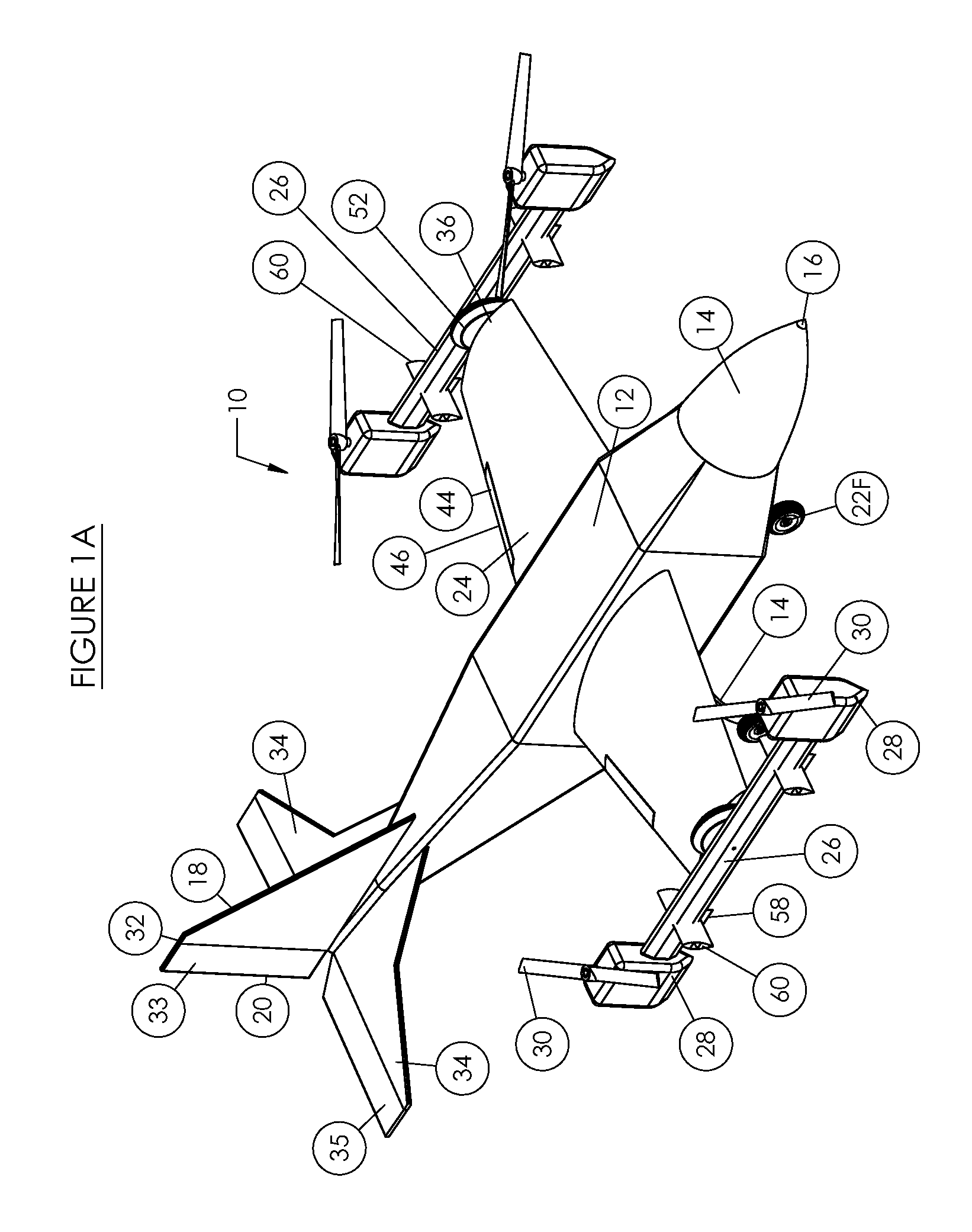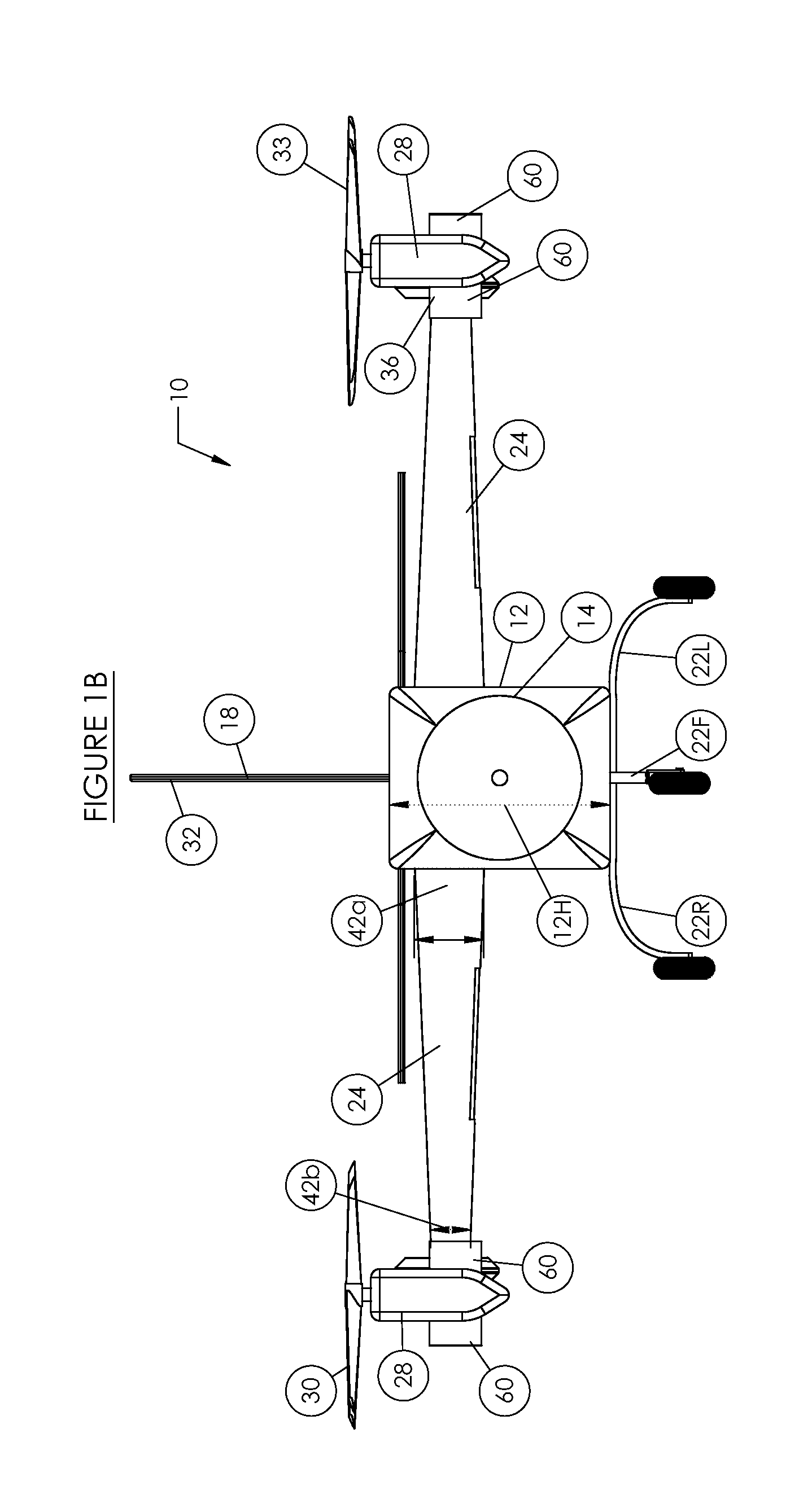Aircraft with Wings and Movable Propellers
- Summary
- Abstract
- Description
- Claims
- Application Information
AI Technical Summary
Benefits of technology
Problems solved by technology
Method used
Image
Examples
Embodiment Construction
[0070]FIGS. 1A-1D depict an aircraft 10 according to the invention. The aircraft 10 includes a fuselage 12, nose 14 positioned at the aircraft front 16, tail assembly 18 positioned at the aircraft rear 20, landing gear (front 22F, left 22L, right 22R), wings 24, propeller supports 26, engines 28, and propellers 30.
[0071]The fuselage 12 can be of various sizes, with the specific size dependent on the particular application, including characteristics such as payload, range, speed, etc. In one embodiment of the invention, the fuselage has a length 12L (nose to tail), a width 12W, and a height 12H. Some or all of the landing gear 22F, 22L, 22R may retract into the fuselage 12.
[0072]The tail assembly 18 comprises a vertical stabilizer 32 and horizontal stabilizers 34. The vertical stabilizer may be configured to rotate left or right, and / or may include a vertical stabilizer flap 33. In the particular embodiment depicted, the horizontal stabilizers 34 are generally in line with the plane ...
PUM
 Login to View More
Login to View More Abstract
Description
Claims
Application Information
 Login to View More
Login to View More - R&D
- Intellectual Property
- Life Sciences
- Materials
- Tech Scout
- Unparalleled Data Quality
- Higher Quality Content
- 60% Fewer Hallucinations
Browse by: Latest US Patents, China's latest patents, Technical Efficacy Thesaurus, Application Domain, Technology Topic, Popular Technical Reports.
© 2025 PatSnap. All rights reserved.Legal|Privacy policy|Modern Slavery Act Transparency Statement|Sitemap|About US| Contact US: help@patsnap.com



